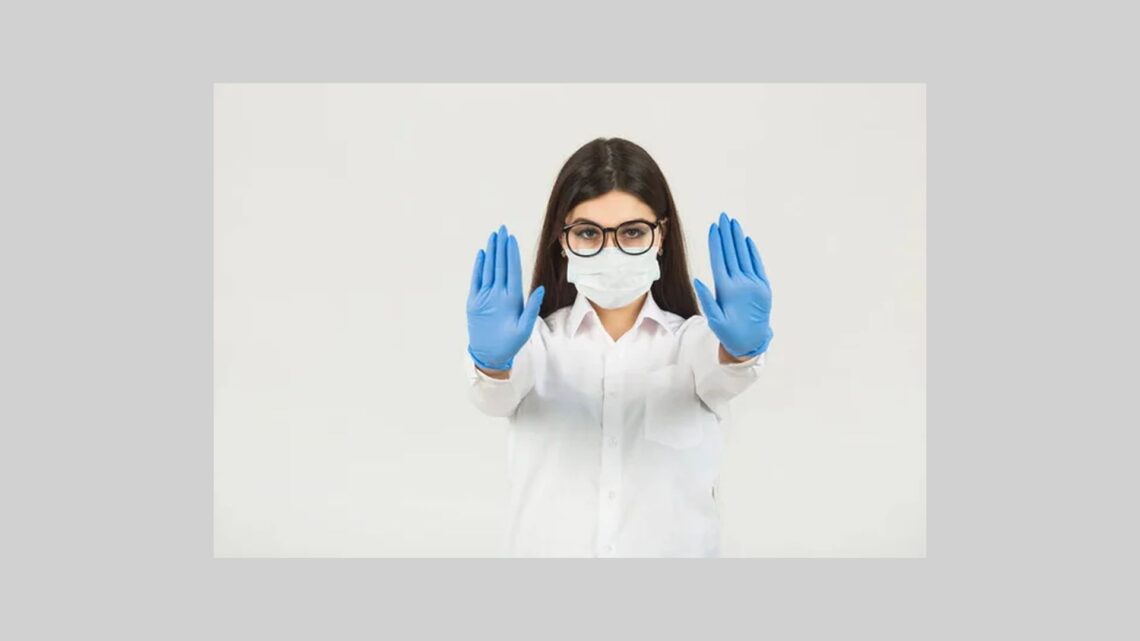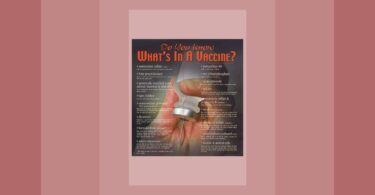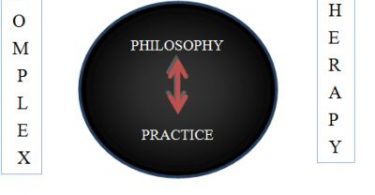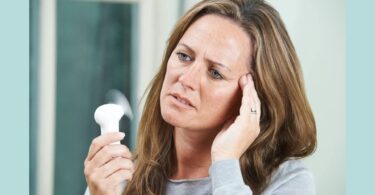Facing off the critical importance and mystery of diagnosis…
This is the story of a swell of well-indicated remedies failing. It is also the story of the beginning of a cure when the obstacle was finally removed.
It started in December of 2015 or January 2016. I don’t remember, because at the time it seemed so insignificant. I tripped and fell. My dogs wrapped their leashes around my ankles and pulled. I fell first on my forearms, secondarily on my chest, which was slightly twisted, and lastly, on my face. I thought the end result of it was some temporary pain and damage to my elbows. I dismissed any thoughts of going to the ER but within a month or so, I started experiencing spasms in my upper back. They were acute and relieved with some massage (from a very gracious and loving husband). I dismissed that, too. The elbows recovered sufficiently so that I was able to dress myself and go to the bathroom, but I couldn’t do yoga or shoot a gun. I dismissed that, too.
After about 6-8 months, I started feeling overwhelmed in situations I normally would have handled easily or happily. I had anxiety with pain in my sternum. I thought I had nausea that was secondary to the anxiety. I never considered the sternum and I dismissed that. I could handle it. I had taken Arnica and Rhus-t early on as indicated. It would go away. I always healed well and quickly.
About a year later, in January of 2017, I had what I thought was a panic attack of biblical proportions out of nowhere while I was working with a patient. I started a session and knew within a few minutes that I was in trouble. It felt like a spiritual attack, like panic, like dying, like fainting, like heart trouble, like being thrown out of an airplane. I’d never been so confounded or scared in my life. I got into my car and determined somehow to drive home. To this day, how I got there, I don’t know.
This acute episode abated after a while, but I told my husband about it. He didn’t quite know what to make of it. He’d never seen me so flustered and out of control. I had no history of panic.
I consulted with another homeopath. We used Aconite 1M then 10M repeated several times. It had limited success. We used Carcinosin 1M repeated daily. Also, some effect initially, but dissipated within a few days. We used Gelsemium from 200c to 1M, which produced exactly the same response. The sensation of panic without any concomitant cognition (e.g., “Oh, no, it’s all going wrong.”) persisted day and night. It was experienced entirely in the epigastrium. It radiated to the chest, back and down the abdomen.
The operative word was sensation. And while every homeopath I worked with chose the rubric “ailments from fright,” it was, in fact, just the opposite. Fright didn’t cause anything. Fright was the result of the physical symptoms. This was further clarified by the fact that there were intermittent periods of relief (e.g., by walking or standing). And when there was no pain, there was no anxiety or sensation of panic at all.
As it progressed, however, I worried that something was wrong with my heart. But I didn’t say anything until early February when I looked at Dave and said, “We better go to the hospital.”
It was late and dark and he drove to Sandoval UNM. They did every test required for a suspected MI: troponin levels, chest x-ray, EKG, cbc and chem panel. After 10 hours, they gave me Atavan and I felt a little better. (Later I understood that it worked so well, because it was a muscle relaxant.) They discharged me because every test was normal. There was only one anomaly…a high TSH, which later proved to be an error. In fact, all my thyroid functions were perfectly normal, as we later discovered.
SIDEBAR!!! And a serious word of caution: PLEASE: Be careful not to jump when they say jump, especially when you’re standing next to a cliff. The ER doc impulsively sent me home with an Rx for thyroxin. I mentioned it to my father, who was an internal medicine doc, and he said, “Don’t touch that!!! Get retested.”
He was right.
That was the first ER visit. From there things got worse. There was no respite. My life was nothing but thoracic pain that felt like nausea and panic (chest and abdomen), but had no known cause. I didn’t eat. I didn’t sleep. I lost 30 pounds in a few months. I was scared it was a pheochromocytoma or pancreatic cancer. We went to internal medicine docs, family medicine docs, went back to the ER 5 times before April, each time thinking I was having a heart attack or something even worse. All throughout, we were working with exceedingly skilled and well-respected homeopaths who prescribed Pulsatilla, Argentum Nitricum, and other well chosen remedies. All throughout they produced the same short-term amelioration with no cure. When things like this happen to people and the acute becomes chronic, depression is a NORMAL reaction. It is not necessarily the cause. But that is not where the homeopathic practitioner often goes, thinking that if the remedy isn’t working, it has to be an emotional cause. In allopathic circles, that same circular reasoning is used with different drugs at the exit ramp. But it is the same mistake: A lack of curiosity. I remember one doctor in particular who dismissed me from his office when I was “in too much distress” for him to work with. He asked me to leave. The nurse, who escorted me out, was beyond mortified. Not once in all the early ER visits, doctor visits, CT scans, sonograms, X-rays, and blood tests, did anyone do a neurologic exam. Not once did anyone ask if I’d been in an accident or hit my head or hurt my back or chest. Not once did anyone ask what “kind” of pain it was or they might have suspected a structural problem. Not once did anyone actually do a concentrated imaging study of the lower sternum.
Finally, after another series of remedies, several additional ER visits and appointments with different allopathic physicians, we went to the revered Mayo Clinic. They reviewed the records and like others before them, recommended antidepressants. I was a woman, post-menopausal and it was the most sensible first option from their viewpoint. I looked up the side effects and I didn’t take them.
I went back to the MD who sent me for a HIDA scan. Was it the gallbladder? The test revealed “some dyskinesia” and they decided to perform a cholesystectomy. After numerous promises that “this was it,” I woke up after it was done and wanted to die. I’ve been sick in my lifetime. I’ve had asthma, pneumonia, reproductive issues that were excruciatingly painful, but I’ve never experienced despair as I did in that moment.
I went to other practitioners: acupuncturists, wonderful mental health professionals, alternative specialists, doctors, GI specialists, an endocrinologist and cardiologist, a neurologist…all of whom were honorable, but none of whom saw outside their own particular box. And they all tried and their intentions were good. But it wasn’t enough. Not one had a wide-angle lens. Finally, after 7 ER visits, untold medical consults, numerous tests, surgery, prescriptions, and inordinate frustration and fear, I called a friend of mine, a holistic doc. He put me through a series of little kinesthetic tests and finally put his fingers on my forehead as he tried a specific type of muscle testing with me.
He said, “I can’t clear your atlas.”
I asked, “What?”
“Your spine may have a bit of an alignment problem. It’s the C-1.”
I felt my viscera drop. I didn’t know much about the atlas except that it held up my head and if it twisted enough, I would be dead. How did that happen? And was it permanent?
He referred me to a chiropractor, the last professional on earth I would have thought of. I was queasy and terrified and squeezing throughout my thorax. Why would I see a structural specialist? In any case, I went to see her. She put me through an extensive battery of clinical tests, x-rays, and questioning. She tested my eyes and reflexes. She was the first one! My atlas, the C-1, and axis, the C-2, were out of alignment. I had nystagamus (why didn’t anyone else check for that???). I had poor reflexes. My blood pressure was higher on one side than on the other.
She started treatment by adjusting the atlas/axis and within one month there was nearly a 50% improvement. The worst pain—the squeezing in my chest and abdomen—didn’t go away completely, but it receded enough for me to stop crawling, screaming, and crying and to start going to the supermarket, to start talking to people again, and best of all to start walking every morning. Finally after about 6 months of chiropractic treatment of the atlas, another 6 months of treatment with alternative modalities, I had to reassess. We were still experiencing the weird nausea, the squeezing chest and abdominal pain and life was still “interrupted.” What was going on? I had already ruled out the worst. It wasn’t cancer. It wasn’t autoimmune. It wasn’t spinal cord. It wasn’t viral or bacterial.
The next part of the answer was with a chiropractor in Colorado who worked with traumatized muscles and nerves. Most of his prescription had to do with exercises, which made good sense initially, but ultimately made things worse. The pain was now clearly coming from the bottom of the sternum and the top of the epigastrium. I called a friend of mine, a chiropractor in Texas. He listened to my story and said, “It’s not your neck. It’s your chest.” This was on the phone. He didn’t even examine me.
It started a whole new line of inquiry. I started looking up thoracic pain, radiating (to back, to chest, to abdomen). I looked up sternum pain. I looked up xiphoid. And what do you know? There it was. Every symptom I’d had over the past two years was wrapped up in a syndrome known as xiphoidynia. I kept looking. And studying. And, almost unbelievably, I found a doctor in Texas (Albert Yurvati, D.O., FACOS, FAHA, FICS at the University of North Texas Health Sciences Center) who specialized in xiphoid syndrome. I called and found out he would review my imaging studies for free. I sent them all with a brief history. His office called me in a week and said, “You have an inverted xiphoid that is impinging your pericardium and abdomen.” He saw it on a two year old CT scan!!! Everyone missed it. And in fact, it was FRACTURED. How it managed to not puncture my heart or my liver or my intestines is beyond my imagining. It had to be divine intervention. We scheduled surgery to remove what had been injured. And there it was. Over. The whole thing. Gone.
So, to recap: Over the course of just one year, I had 20+ remedies, all of which were well-selected. I had a full abdominal CT scan, 8 CBCs, 8 Chem Panels, 7 ER visits, a Hida Scan, an abdominal sonogram, an echocardiogram, 6 or 7 thoracic (frontal) x-rays, an endoscopy, an upper GI series with small intestine follow through, GI consults, endocrine consult, 2 neuro exams to test for ALS or MS or CNS malfunction, a cholecystectomy for apparently no reason, testing for yeast, for adrenal fatigue, for parasites, for viruses, and for cancers of numerous kinds. I was dismissed, denied, and told I was deranged.
But what really happened is that I fell and went boom. And no one had asked.
Which brings us to…
LISTENING SKILLS
So, what happened here diagnostically? Why did it take so long to come to some kind of diagnosis?
In my mind, looking back on it, there were several things:
- It was how I presented. I kept talking about nausea and upper GI pain. No one encouraged me—until the atlas testing—to think otherwise. No one linked any of my parts to one another.
- No one looked. No one thought of structure and its impact on nerves. And the neurologists never thought of peripherals or dermatomes. When I asked about peripherals, they all said, “no way.”
- No one listened to the whole story or thought about bones. I kept holding my xiphoid and pointing to it as the source of the problem. Why didn’t anyone see that as a clue?
- No one was curious enough to keep looking. Once they came to a diagnosis, they stopped. Two docs actually yelled at me, telling me I was looking for a needle in a haystack.
The answer: GET OUT OF THE BOX.
By the time most of my patients knock on my door, they are desperate beyond endurance. Mental health professionals are not at the top of their lists, we are at the bottom. We have to understand and respect that. So, how do we do that? We can LISTEN! Listening is the platform of good medical practice, no matter what little corner of it you occupy. How do you know you’re listening well? Are you listening at all? Are you putting people into political templates? Cultural templates? Not everything is about Zoloft or sexual abuse or bipolar disorder. Think. Think. And then think some more. A person’s life is hanging in the balance.
Don’t forget that the patient—who is in pain, confused, despaired, desperate, and probably battered by his own personal medical circus—doesn’t know what’s actually wrong or he would’ve found an answer already. So…What questions can you ask to elicit more accurate information? What are the questions you remember to ask only after the session is over? What are the questions that open you up to the things you don’t know yet? Or the possibility that there may be more than one or two culprits that need to be dealt with?
Some questions you might consider:
- When did this start? You would be aghast to know how rarely this is asked.
- What was happening in your life at that time? Right before it? (In your mind you want to know whether there was an injury to the vital force/emotional-spiritual center that tilted things off course.)
- How were you feeling then?
- Any recent injuries—even minor ones that seem inconsequential?
- Any history of injuries—even minor ones?
- Neurologic exams?
- Endocrine exams?
- Any ER visits? Any X-rays, CT scans or MRIs? Any blood tests?
- Any frights?
- Any sorrows or griefs?
- Who do you talk to about how you feel? Who can you reach out to for help?
- Any changes in vision? In appetite? In socializing?
- What are some of your thoughts regarding this medical/physical situation?
(Let people ramble with this. It’s very illuminating for us and very therapeutic for the patient. Be gracious with this question.)
- What medications are you taking? How long have you been taking them? What effects have you noticed? (Then look them up yourself! Half of the medications on the market are anticholinergic and negatively impact cognition as well as mood.)
- Have you ever lived in a mining town or farming community? Any exposure to known toxins or heavy metals? (Motor neuron disease is ubiquitous in farming and petroleum communities.)
- Have you ever been bitten by a tick? (Yes, that is a terribly important question and if they answer yes you must refer to DNA Connexions for testing. The regular ELSA and Western Blot are notorious for missing it.)
- Do you have any recurrent rashes, fevers, or joint pain?
And most importantly, even if you get an answer to each one of these questions, don’t assume it’s accurate or enough. Keep digging. Keep referring. Keep asking. Keep advocating. Don’t make a medical diagnosis. Just get the information and have referrals on hand.
So, here’s the mandate:
It is not enough to fill out a form. It is not enough to close a folder and pass it down the hall to someone else to fill out another form. It is not enough to put our initials on a claim and submit billing. It is just not enough. What we are being called to do is act as a prism—to break up the light and look at its components, to be different than everyone else. We need to listen better and see more. That is our job. That is what we signed up for. Some people fight on military battlefields and some of us fight right here, where we live. This is a battle. Put yer gear on and get in the fight proper.
Sources:
https://www.doctorslounge.com/psychiatry/forums/backup/topic-3554.html





This is such an excellent article and SO needed. There is an extreme amount of bias among most practitioners, no matter how well meaning. And the lack of curiosity is very prevalent. Thank you for sharing your story and the recommendations… just think how many lives could change/be saved if doctors and practitioners did these.
Dr. Acosta,hello
Your well written article was read and enjoyed in one sitting, you have such an excellent way of putting things in their prospective and explain them nicely.
I’m an ardent supporter of homeopathy and have many real life stories to tell as to how seriously ill patients have recovered from a single remedy and the results were astounding to both, the patient and the practitioner alike.
I use “pendulum dowsing” to find the correct homeopathic remedy the very first time and it is very encouraging and satisfying.This field of diagnosis and finding remedy is called Radiesthesia (the science of Pendulum dowsing).Have you ever heard of it or used it.Kindly do write more often on interesting cases.Thanks
Great article, Judith, I’m just sorry you had to go through so much, so many doctors and hospitals before getting any results, it’s horrifying to think about; imagine that only one doctor knew what was wrong with you! The Mayo Clinic didn’t even know! (Antidepressants, OMG!) Well, this is what comes of being a dog owner; as a matter of fact, I can recall two cats charging down the hall once and knocking me right off my feet as I was holding a pitcher of orange juice! Anyway, your article was very well-written and easy to read. Thank you for sharing.
Dear Elaine,
Thank you for your encouraging words. Dogs!!! Indeed!
God bless you,
Jude
Very informative on a medical situation that probably is not at all. unique to you alone. Doctors are people like the rest of us and have their own lives and personal problems and a high ego. They will of course work with a patient to alleviate a medical problem which is why we when there in the first place. They may fail to be of benefit to the patient in their field of medicine but also fail to refer the patient elsewhere. They then in their mind believe the patient has emotional or mental problems.
I thank the internet for providing people with a way to seek help in this modern world. The internet itself must be used rationally and cautiously for anything but provides a gigantic source of information.
Oh my gosh, Judith ! It all makes sense now. You were going through ALL OF THIS when we came through the state to visit in 2017. I’m so, so glad you are better. Sending love and gratitude.